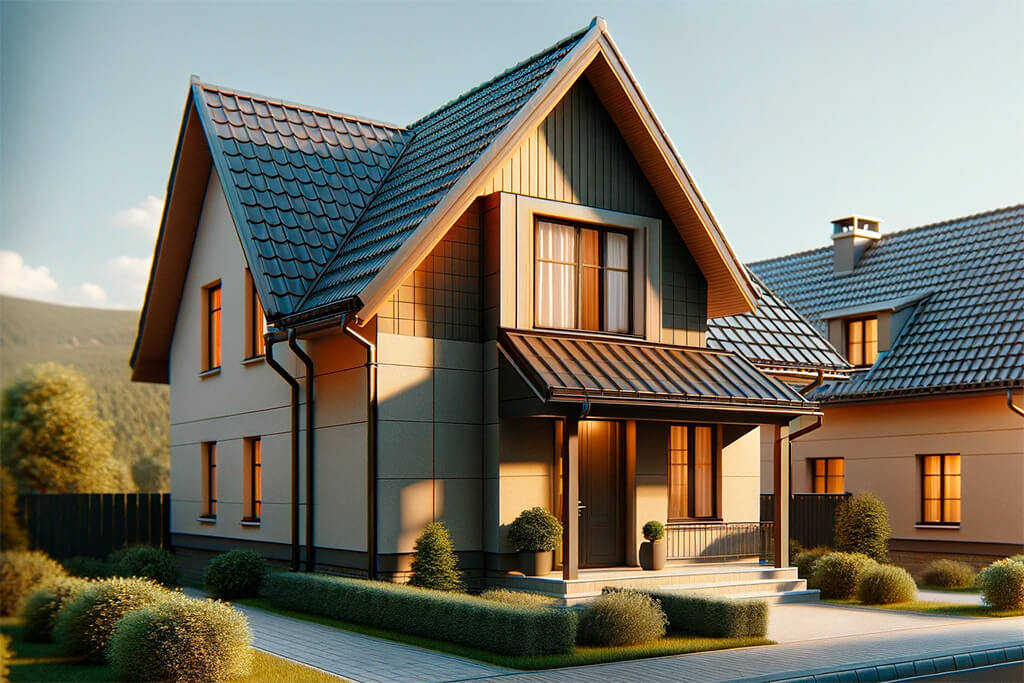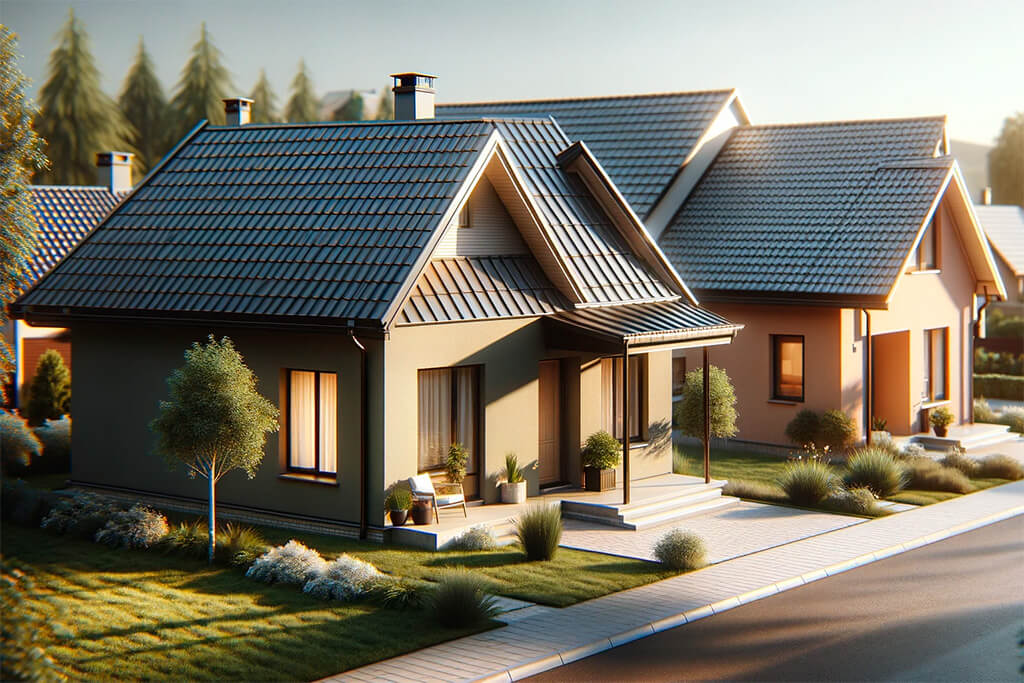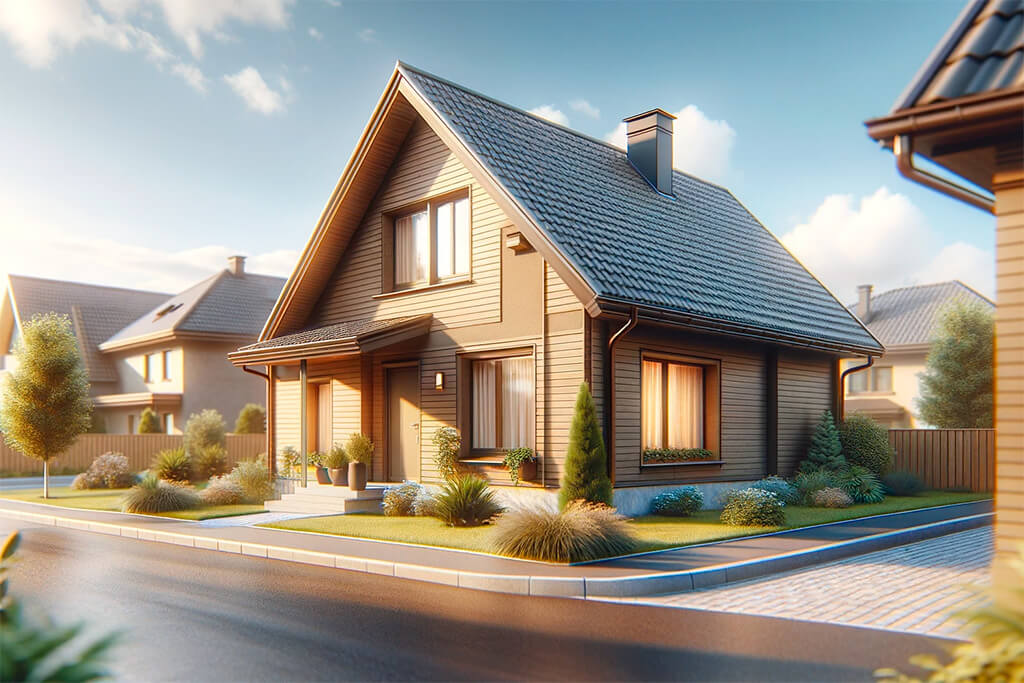Selecting the right roofing material in a hot climate isn’t just a question of aesthetics, it’s a critical decision that impacts your home’s overall comfort and energy efficiency. Over the years, I’ve seen how the right (or wrong) choice can make a significant difference. When the sun’s blazing down, your roof is the first line of defense. It’s crucial to understand how different materials react under these intense conditions.
We’re looking at two main contenders here: metal roofs and shingle roofs. Each has its unique characteristics, benefits, and drawbacks, especially when the mercury rises. Let’s delve into the specifics of these materials and see how they stack up.

Understanding Metal Roofs
Metal Roofing Materials Explained
- Aluminum: It’s lightweight and doesn’t succumb to corrosion, making it an excellent choice for coastal homes where salty air is a concern.
- Steel: The sturdy option. Whether it’s galvanized or coated, steel roofs offer robust protection and endurance.
- Copper: The premium choice. It’s expensive, but it ages beautifully, developing a unique patina over time.
Advantages in Hot Climates
- Reflectivity: Metal roofs are akin to a reflective shield. They deflect solar heat, helping to keep your attic and house cooler.
- Durability: They’re built to last, resisting damage from various elements including wind, rain, and even fire.
- Longevity: A metal roof is a long-term investment, often lasting 40-70 years with minimal maintenance.
Disadvantages to Consider
- Cost: Quality comes at a price. Metal roofs require a larger upfront investment compared to other materials.
- Noise Factor: They can be noisy during rainstorms, which might be a consideration for some homeowners.
Exploring Shingle Roofs
- Asphalt: The most common choice due to its affordability and versatility. Easy to install and available in various styles.
- Fiberglass: These shingles are reinforced with a fiberglass mat, providing enhanced durability.
- Organic: Made from recycled felt paper, they’re heavier and can be more susceptible to moisture.
Advantages in Hot Climates
- Aesthetic Flexibility: Shingles offer a wide range of colors and styles, suitable for any architectural design.
- Installation Simplicity: They can be quickly and easily installed, a real boon for DIY enthusiasts or those on a tight timeline.
Disadvantages to Consider
- Shorter Lifespan: In hot climates, shingles may require replacement sooner (every 15-30 years) than metal roofs.
- Heat Absorption: Shingles can absorb heat, potentially increasing your air conditioning needs and energy costs.
In conclusion, whether you’re renovating an existing home or building a new one, understanding the pros and cons of these roofing materials is essential in hot climates. The right choice can lead to years of comfort and cost savings, while the wrong one can result in ongoing headaches and expenses. Let’s continue to explore these options further, keeping in mind that in the world of home construction, informed decisions are always the foundation of success.

Energy Efficiency and Savings
In the world of roofing, energy efficiency isn’t just a buzzword, it’s a crucial factor that impacts your living comfort and your wallet. Let’s break down how metal and shingle roofs stack up in this arena.
Metal vs. Shingles: A Comparative Glance
- Metal Roofs: They’re like a reflective shield for your home. Their ability to reflect solar heat means your interior stays cooler, leading to less reliance on air conditioning. This is a real game-changer in reducing energy bills.
- Shingle Roofs: These are more likely to absorb heat, particularly the darker shades. This can lead to higher indoor temperatures and an increased need for air conditioning, which, in turn, might spike your energy costs.
Metal Roofs: A Win for Your Wallet
In the scorching heat, a metal roof is your best ally. Its reflective properties keep your home cooler naturally. Adding reflective insulation under a metal roof creates an unbeatable team for energy savings.
Insulation and Ventilation: The Unsung Heroes
Regardless of the roofing material, don’t overlook the importance of proper insulation and ventilation. Together, they make sure your attic doesn’t become an oven in the summer, helping maintain a comfortable and energy-efficient home.
Longevity and Maintenance
Rooftop longevity and maintenance are more than just practical considerations, they’re about getting the most out of your investment.
Metal vs. Shingle Roofs: The Longevity Battle
- Metal Roofs: These are the marathon runners of the roofing world. With a lifespan of 40-70 years, they’re a set-it-and-forget-it solution. This longevity is particularly valuable in hot climates where other materials might falter.
- Shingle Roofs: Think of these as more of a middle-distance runner. They’ll last you 15-30 years, but in hot climates, be prepared for potential replacements at the shorter end of that spectrum.
Maintenance: Keeping Your Roof in Top Shape
- Metal Roofs: They’re relatively low-maintenance. Regular inspections for any signs of wear, such as corrosion or loose panels, are usually all that’s needed.
- Shingle Roofs: These require a bit more attention. Regular checks for damaged or missing shingles are essential, especially after extreme weather events.
The Impact of Climate
Hot climates can be harsh on roofs. Shingles might crack or warp, while metal roofs can expand and contract. Regular inspections are key to maintaining roof health.

Cost Analysis
Understanding the costs associated with each type of roofing material is crucial for making an informed decision.
Initial Outlay: What You’re In For
- Metal Roofs: They come with a higher initial price tag. Think of this as an investment in durability and energy efficiency.
- Shingle Roofs: More budget-friendly at the outset. They’re the go-to for immediate affordability.
Long-Term Financial Considerations
- Metal Roofs: The upfront cost can be offset by their long life, minimal maintenance, and energy savings over time.
- Shingle Roofs: While cheaper initially, they may lead to higher costs in the long run due to more frequent replacements and potential increases in energy bills.
Evaluating Cost-Effectiveness in Hot Climates
Metal Roofs: In the long haul, especially in hot climates, metal roofs can be the more cost-effective choice, offering long-term savings in maintenance and energy bills.
Shingle Roofs: They are a viable short-term solution if initial costs are a major concern. However, be prepared for possible increased costs in energy and maintenance.
Aesthetic and Design Considerations
Choosing a roof is as much about style as it is about shelter. It’s an architectural statement that can elevate the look of your home. Let’s explore the aesthetic versatility of metal and shingle roofs.
Metal Roofs: Not Just for Barns Anymore
- Stylish Versatility: Gone are the days when metal roofs were just for farmhouses. Today, they come in an array of finishes and profiles, from sleek standing seam to metal shingles that mimic traditional slate.
- Suitable for Any Home: Whether you’re sprucing up a contemporary abode or a classic cottage, there’s a metal roof that can complement your home’s architecture beautifully.
- Color and Heat: Opting for lighter hues in metal can help reflect the sun’s rays, keeping your home cooler and saving on air conditioning costs in hot climates.
Shingle Roofs: Time-Honored Tradition
- A Plethora of Choices: Asphalt shingles offer a traditional aesthetic, but with a modern twist. They can replicate the look of wood, slate, and more, allowing you to tailor the roof to your home’s character.
- Perfect for Many Styles: Ideal for a wide range of home designs, shingle roofs bring a classic touch to everything from bungalows to colonial houses.
- Color Matters: Lighter colored shingles can help a bit with heat reflection, but they generally absorb more heat than metal, affecting your home’s temperature.
FAQ Section
Metal roofs excel in energy efficiency. Their reflective properties mean less heat absorption, resulting in cooler interiors and lower air conditioning costs, a significant advantage in warmer climates.
Shingle roofs usually last between 15-30 years, but in hot climates, the intense sun can shorten this lifespan. Regular maintenance can help extend their life, but they typically need replacing sooner than metal roofs in these conditions.
Yes, the color of your roof can have a considerable impact on your home’s internal temperature. Lighter colors reflect sunlight and heat, whereas darker shades absorb them, making your home warmer.
